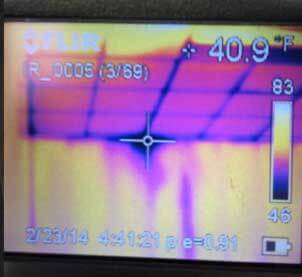ECOSEAL
A water based elastomeric sealant installed by Fleetwood Drywall, Inc.

The importance of air sealing
All insulation works by trapping air. Spray foams are super effective at trapping air because it is essentially a plastic which helps give it its R-value. Fiberglass and Cellulose work in the same way, they work by trapping air. As building science has come to understand this fact, we have put a huge emphasis on air sealing. Not only will a good air seal help our insulation achieve its stated R-value, but we will also be able to control the moisture content of a home more effectively.
The problem with caulk
Many companies use caulk to air seal under the new code. Caulk is a time tested product that IF applied correctly will do the job of stopping air infiltration into a home. However, often times the caulk is just laid on top of the seam which doesn’t create the adhesion for a long lasting seal. Ecoseal is applied through an airless sprayer, so it goes on under pressure making the air tight seal as far back towards the exterior sheathing of the wall system as possible. Ecoseal is also water based, which makes it a enviromentally friendly product that is safe for our builders, home owners, and other contractors.
Why the emphasis now?
As energy costs have increased, building scientists have made a larger emphasis on controlling the air that comes into the home. By controlling airflow, we improve the effectiveness of insulation, control moisture content and condition the indoor air efficiently, which helps keep energy bills low.

Thermal Envelope
The thermal envelope is the barrier between the conditioned space and the unconditioned space of a home. Your insulation at your thermal envelope and your pressure boundary always need to be inline in order for the insulation to be effective.
In this photo, this ceiling was insulated continuously with R-49, a good R-value even for our area! However, no air barrier / pressure plane was put up against the insulation (only an accoustical ceiling was installed). The result is an ineffective thermal envelope.